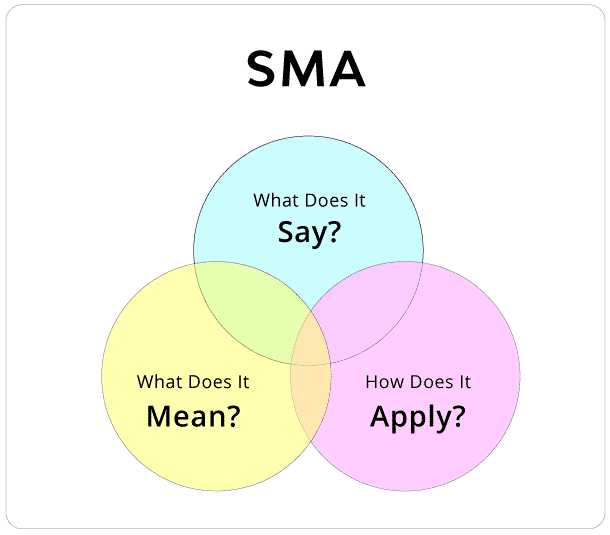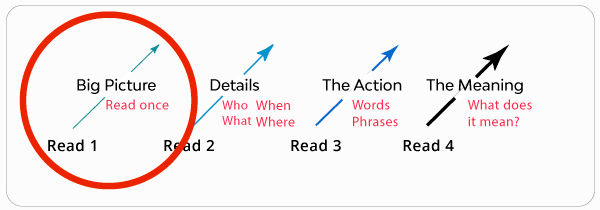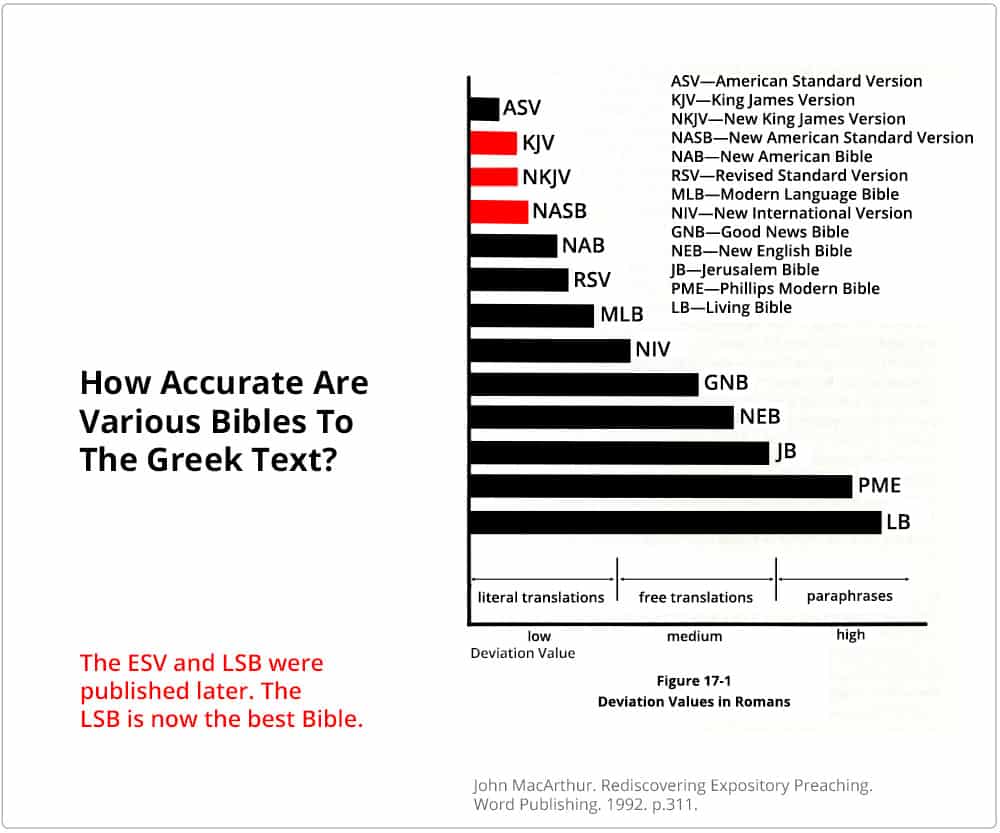
We have already discovered why we should study the Bible. We have also learned some foundational principles that prepare us for Bible study. In this study we want to start learning how to study the Bible. I would like to start by asking, “How did the Old Testament saints study the Scriptures?” We will begin with Ezra 7:10. It says,
This was because Ezra had determined to study and obey the Law of the LORD and to teach those decrees and regulations to the people of Israel. Ezra 7:10 (NASB)
Here we are told that Ezra, the priest, had determined to study, obey, and teach the Law of the Lord to the people of Israel. His first step was to study the Law of the Lord. As he studied, he would have understood its meaning. Then we are told he obeyed the Law, or we could say he applied what he learned. Obedience pleases and glorifies the Lord. It also enables one to know more about Scripture. Another benefit is that a believer then becomes more spiritually mature. Finally, we are told that Ezra taught the Law. These three steps of 1) study, 2) personalizing it with obedience, and 3) teaching; it tells us how to study the Scriptures.
Nehemiah 8:8 also tells us how to study the Bible. The verse says,
They read from the book, from the law of God, translating to give the sense so that they understood the reading. Nehemiah 8:8 (NASB)
The “they” in this verse refers to the Levites. That is the message of verse 7. Now notice the first thing the Levites did was to read the Law of God. As they read it, they translated the words so that the people understood the reading. Today we read Bibles that have already been translated for us. But there is still a need to check the translations from the original Hebrew, Aramaic, or Greek as will become obvious in this lesson.

SMA — Say, Mean, and Apply
1 Timothy 4:13 reveals that Paul studied the Bible in the same way. Paul wrote these words,
Until I come, give attention to the public reading of Scripture, to exhortation and teaching. 1 Timothy 4:13. (NASB)
Paul summarizes Bible study as reading, exhortation, and teaching. So, these three passages give us some guidelines for studying the Bible. First, we must read. That would include translating the words of the Scripture passage so that people know what it says. Second, we must discover its meaning. Third, we must apply it. That includes exhortation. An acronym for these three steps in Bible study are SMA. The “S” symbolizes “What does it say?” The “M” symbolizes “What does it mean?” The “A” stands for “How does it apply?”
What Does It Say?
The first step in Bible study is to read the passage in order to know what it says. Often we will read a passage of Scripture quickly. As a result, we are often left with the wrong impression about what is written. Therefore, it is recommended that we read the passage more than just once. We should read the passage at least four times. With the first reading, we obtain the big picture about the passage. Now this may seem to be an elementary concept because we usually just read and think we know what the passage says.

1) What Bible should you read?
Since we have so many different types of Bibles, we should ask, “Which Bible should I use for Bible study?” Here are five questions to consider:
- Should you read a Bible that reads easily so you can understand it?
- Should you read the “King James Version Bible” because it has a reputation of being the most accurate?
- Should you read “Today’s New International Version” (TNIV) because it is gender neutral?
- Should you read “The Passion Bible” because it is inspired by the Holy Spirit?
- Should you read the David Jeremiah Study Bible because you like this preacher?
The answer to the first question is “No.” The reason is that a Bible that reads easily may be an inaccurate translation of the Hebrew, Greek, or Aramaic languages in which it was originally written. The answer to the second question is the old King James Version Bible is not as accurate as it was in 1611 because the English language has significantly changed in the centuries since it was written. The answer to the third question is that a gender-neutral Bible should never be the goal of Bible translators. The goal must be to translate the Bible just as it was written. Changing the words changes how God wrote it. The TNIV distorts key passages of the Bible. The answers to the fourth and fifth questions are that these Bibles are not more important because of the man who sponsored them. The most important question in choosing a Bible is which Bible should you use for Bible study if you do not know Hebrew, Aramaic, and Greek?
I have a cartoon of a man who is complaining about people who use a Greek lexicon. He insists that Jesus spoke “American.” The cartoonist wanted to make a point, so he used “American” and not “English” to reveal that the man did not understand the Bible was written in Hebrew, Aramaic, and Greek. Some believers may not understand that our English Bibles, while very good, are still incomplete. That means modern Bibles should be as accurate a translation as possible of the original languages in which they were written.
Dynamic Equivalence Bible Translations
It is also important to know that there are two basic types of Bibles that you can buy. One type of Bible is a thought-for-thought translation. These Bibles are also called dynamic equivalence Bibles. This means the Bible translators attempted to provide a sense of the original Hebrew, Greek, and Aramaic. These Bibles are easier to read. One disadvantage of this type of Bible is that accuracy is sacrificed in favor of making it easier to read. A second disadvantage is that translators often insert their own ideas into the translation. That distorts how the Bible was originally written. Such Bible translations become more like a commentary. Frequently, the actual meaning is changed.
Formal Equivalence Translations
We can also buy Bibles that seek to match one English word for one Hebrew, Greek, or Aramaic word. The goal is to provide a translation that is as close as possible to the original languages. These Bibles are also called formal equivalence Bibles. They minimize the “need-to-know” for believers to know Hebrew, Greek and Aramaic. This is a great advantage. The major disadvantage of this Bible is that some Bible passages may be more difficult to read.
Examples of Different Bible Translations
Now we need to understand the difference between thought-for-thought and literal translations. So, let us examine how some Bibles translate Acts 14:23. First, we need to obtain a literal translation of the Greek text of Acts 14:23 which is,
χειροτονήσαντες δὲ αὐτοῖς κατ’ ἐκκλησίαν πρεσβυτέρους, προσευξάμενοι μετὰ νηστειῶν, παρέθεντο αὐτοὺς τῷ Κυρίῳ εἰς ὃν πεπιστεύκεισαν. [1]
A literal translation of this verse from the Greek is as follows,
And they had appointed for them in every church elders, having prayed with fasting, they commended them to the Lord in whom they had believed. Acts 14:23
Now we will examine some dynamic equivalence Bible translations and compare them to this translation of the original Greek. In each of the following Bible translations we have highlighted the parts of the translation that do not agree with this literal translation of the Greek, and then provide an evaluation.
Amplified Bible — Not Accurate
Here is the Amplified Bible translation of Acts 14:23.
When they had appointed elders for them in every church, having prayed with fasting, they entrusted them to the Lord in whom they believed [and joyfully accepted as the Messiah].
The Amplified Bible is rated as not accurate because it added “and joyfully accepted as the Messiah.” These words do not exist in the original Greek text.
New Living Bible: — Not Accurate
Here is the New Living Bible translation of Acts 14:23.
Paul and Barnabas also appointed elders in every church. With prayer and fasting, they turned the elders over to the care of the Lord, in whom they had put their trust.
The New Living Bible is rated as not accurate because the translators embellished the meaning of the Greek word paratithems which is normally translated as committed or commended. This translation is essentially a commentary.
The Passion: — Not Accurate
Here is The Passion Bible translation of Acts 14:23.
Paul and Barnabas ordained leaders, known as elders, from among the congregations in every church they visited. After prayer and fasting, they publicly committed them into the care and protection of the Lord of their faith.
The Passion Bible is rated as not accurate because it clearly added the words “Paul and Barnabas” in order to give their impression of what had happened. The original Greek does not say elders were appointed from the congregation. They also distort the meaning of paratithemi.
NIV Bible: — Not Accurate
Here is the NIV Bible translation of Acts 14:23.
Paul and Barnabas appointed elders[a] for them in each church and, with prayer and fasting, committed them to the Lord, in whom they had put their trust.
The NIV Bible is rated as not accurate because it inserted the words “Paul and Barnabas.” They do not exist in the original Greek. This is disturbing since the non-Greek reader does not know what other words may have been inserted in other passages.
Now we will examine some formal equivalence Bible translations and compare them to the translation of the original Greek.
King James Bible: — Accurate
Here is the King James Bible translation of Acts 14:23.
And when they had ordained them elders in every church, and had prayed with fasting, they commended them to the Lord, on whom they believed. (KJV)
The 1611 King James Bible is rated as accurate because it closely interpreted the Greek into the language of its day. Ordained can be understood to mean a formal setting aside, approval, and admission to the ministry by some Christians.
NASB and ESV Bibles: — Very Accurate
Here are the NASB and ESV Bible translations of Acts 14:23.
When they had appointed elders for them in every church, having prayed with fasting, they entrusted them to the Lord in whom they had believed. (NASB)
And when they had appointed elders for them in every church, with prayer and fasting they committed them to the Lord in whom they had believed. (ESV)
These two Bibles are rated as very accurate to the original Greek. They are among the best Bibles to own for serious Bible study if you do not know Greek.
Summary of Bible Translations
In 1992, the Master’s Theological Seminary compared different Bible translations to the original Greek for the book of Romans. The results are displayed in the previous chart.
The results reveal that the most accurate Bible translations in 1992 were the KJV, NKJV, and the NASB.[2] After the study was done, the ESV and the Legacy Standard Bible (LSB) have been published. The ESV is considered to be one of the most accurate Bible translations. But in 2021, the LSB was published and is now rated by many as the most accurate Bible translation. This means that if you do not know Greek and you desire to know how the Bible should read, then buy the KJV, NKJV, NASB, ESV, or the LSB. Then as you read the Bible, you can be assured that you are reading what the Bible said in the original languages.

2) Watch The Chapter and Verse Divisions
A second thing that is important when reading your Bible is to notice the chapter and verse divisions. The chapter divisions were developed by Stephen Lengton in A.D. 1227. The Wycliffe Bible was the first Bible to have chapter divisions.
There are several bad chapter divisions in the Bible. One example of a bad division is between chapters one and two in 1 John. 1 John 2:1-2 should have been included in chapter one. It concludes the discussion of verses 9 and 10.
If we confess our sins, He is faithful and righteous to forgive us our sins and to cleanse us from all unrighteousness. If we say that we have not sinned, we make Him a liar and His word is not in us. — 1 John 1:9-10
My little children, I am writing these things to you so that you may not sin. And if anyone sins, we have an Advocate with the Father, Jesus Christ the righteous; and He Himself is the propitiation for our sins; and not for ours only, but also for those of the whole world. — 1 John 2:1-2 (NASB)
The chapter division leaves the impression that chapter 2 starts a new topic. This means that as we read the Bible, we need to ask if the next chapter is actually a continuation of the last chapter.
Verse divisions were created by Robert Estienne in A.D. 1555. The Geneva Bible was the first Bible with verse divisions. Just as there are bad chapter divisions, there are some bad verse divisions. Maybe one of the worse divisions is between verses 4 and 5 in Ephesians 1. Here is Ephesians 1:4-5. Notice that “In Him” occurs at the end of verse 4, but it is the beginning of a sentence that continues in verse 5.
. . . just as He chose us in Him before the foundation of the world, that we would be holy and blameless before Him. In love . . . Ephesians 1:4 (NASB)
. . . He predestined us to adoption as sons through Jesus Christ to Himself, according to the kind intention of His will . . . Ephesians 1:5 (NASB)
So, as you read the Bible, remember each book of the Bible used to read like one long email or letter. Try to not be bound by the verse and chapter divisions as you read.
3) Notice The MSS Comments
The third thing to watch for are footnotes in your Bible that reveal some verses that perhaps should not be in our Bibles. These footnotes usually refer to trustworthy Greek manuscripts that suggest certain words or verses that perhaps should not be in our Bibles. Consequently, there are reasons to question if they belong in our Bibles.
One example is Matthew 17:21. In the NASB and the LSB, the verse is placed in brackets. Then the reader knows the verse may not have been in the book of Matthew when it was written.
Some Bibles completely remove the verse and leave a footnote explaining the verse is in doubt. Other Bibles just remove the verse and say nothing. Then the reader may not know the verse is missing. When this happens, it is obvious the translator has made the decision that it does not belong in the Bible but never tells you. I prefer to see the verse and just be told that perhaps the verse should not be included. Then I can do some research and decide for myself.
Every believer should know that there are some significant Bible passages that are in doubt. Maybe the most well-known one is found at the end of Mark 16. Another one is John 7:53-8:11, which is about the woman caught in adultery.
A third example is 1 John 5:7, which was added in the 1611 King James Version Bible. People have often used this verse to prove the doctrine of the trinity. The sad problem with this example is that there are strong reasons why this verse should not have been included in our Bibles.
Now why did I mention these passages? I did it because as you read, you need to be careful to not use such questionable passages to establish on their own any teaching or doctrine. The point is that there is reason to doubt that the Holy Spirit moved the author to include it in his writing. We will talk more about this later.
Conclusion
We have discovered that the first step in Bible study is to read it so that we can know what it says. In order to know what it says, we need to read a Bible that is very accurate to the original languages. Second, we should not be controlled by chapter and verse divisions as we read. Third, we need to notice which words and sentences may not have been in the original books of the Bible. This way we can more accurately know what the Bible says as we study it.
References:
1. Acts 14:23. Nestle-Aland 27th Edition Greek New Testament
2. John MacArthur. Rediscovering Expository Preaching. Word Publishing. 1992. p.311.
Suggested Links:
How To Study the BibleWhy Study the Bible? — benefits of studying the Bible
Why We Can Trust The Bible — inspiration and the canon of Scripture
Preparing to Study the Bible, part 1 — why so many interpretations?
Preparing to Study the Bible, part 2 — avoiding errors in interpretation
What Does The Bible Say? — example of observing
Tools For Determining The Meaning — books and software for Bible study
Discovering the Meaning of Scripture — principles of interpretation
How to Apply the Meaning — principles to discover the application